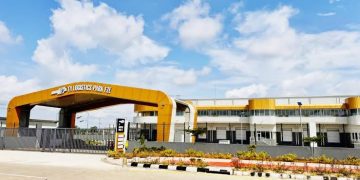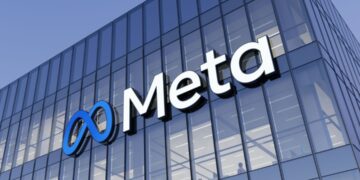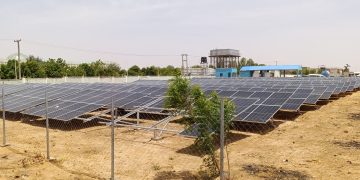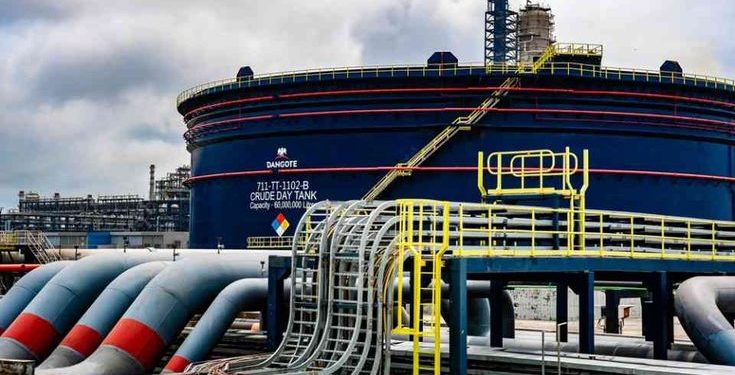Aliko Dangote has confirmed that over 85% of the workforce driving the expansion of his flagship oil refinery will be Nigerians. His plan: scale the facility from 650,000 barrels per day (bpd) to 1.4 million bpd, making it the largest refinery on Earth located on a single site.
The announcement underscores Dangote’s ambition to cement Nigeria’s position not just as an oil producer but as a refining powerhouse. But such grand promises come with intricate challenges, heavy financing needs, and high expectations from a population hungry for jobs and economic growth.
The Expansion Plan: Scale, Stakes & Strategy
- Doubling down on capacity. The current plant in Lekki, Lagos, which began production in early 2024, is designed to process 650,000 bpd. The expansion aims to more than double that, reaching 1.4 million bpd, a scale unmatched among the world’s single-site refineries.
- Equity stake sale for capital. To help finance the expansion, Dangote plans to offload up to 10% of the refinery’s equity, depending on investor appetite, potentially listing parts of the unit on capital markets such as the Nigerian Exchange (NGX).
- External financing ambition. He is targeting $5 billion in support from institutions like the African Export-Import Bank (Afreximbank) to bridge funding needs.
- Timeline & job creation. The three-year timeline is aggressive, but Dangote claims lessons from the first phase will accelerate execution. The expansion is expected to create tens of thousands of jobs, many of them local.
- Economic upside. Dangote suggested the refinery’s revenue could top $55 billion annually, bolstering Nigeria’s hard currency inflows, reducing import dependence, and expanding downstream industries.
Localizing the Workforce: Ambition & Risks
Dangote’s pledge that 85% or more of the expansion workforce will be Nigerian is more than rhetorical—it’s a statement of intent on local capacity building, technology transfer, and industrial sovereignty. Key facets of this approach include:
- Skills development. The plan signals a major push for training programs, technical apprenticeships, and knowledge transfer from global partners to homegrown talent.
- Technology absorption. Some roles, especially in advanced control systems, automation, and specialized engineering, may still draw on foreign expertise in transitional phases.
- Risks of mismatch. The ambitious local content goal raises questions about whether there will be enough trained engineers, operators, project managers, and technicians in-country to meet demand in the timeframe.
- Labor relations memory. Earlier in 2025, Dangote’s refinery reportedly dismissed several workers amid operations downtime. The move triggered unrest and cast a shadow over the refinery’s labor relations environment.
The tension is real: Nigeria has abundant human capital, but scaling it rapidly enough to staff one of the world’s largest refineries is an enormous undertaking.
Financing & Resource Risks: Mountains to Move
The financial architecture of the project is complex and fraught with geopolitical risk.
- Currency and debt exposure. Much of the revenue will likely be in naira, while much of the capital is being sought in foreign currencies, a mismatch analysts warn could erode margins under exchange rate volatility.
- Crude supply challenge. Even the current 650,000 bpd facility struggles to source consistent crude, compelling imports from the United States, Brazil, Angola, and Equatorial Guinea. To expand, sourcing an additional 700,000 bpd reliably is essential. Negotiations continue with Nigeria’s state oil company (NNPC) to secure long-term supply lines.
- Project execution risk. While the original refinery took nearly a decade to build, Dangote insists lessons learned will allow a compressed schedule for expansion. Still, supply chain disruptions, cost overruns, and local permits could delay progress.
Implications for Nigeria & Africa
Economic leap or overreach?
If successful, the expanded refinery would tip Nigeria from a net importer of refined fuel into a major exporter, reversing decades of import dependence. It would also stimulate peripheral industries such as petrochemicals, plastics, logistics, and power, while setting a new bar for local content in African mega projects.
Politically, the high-localization pledge could curry public favor, especially amid widespread youth unemployment. But failure or mismanagement would carry reputational risk, especially as the project becomes emblematic of President Bola Tinubu’s industrialization vision.
The push also aligns with broader continental strategies of energy sovereignty, value chain integration, and industrial upscaling.
Verdict: Visionary or Overambitious?
Dangote’s plan is nothing if not audacious. It combines showmanship with strategic ambition: a Nigerian-led refinery juggernaut powered largely by Nigerian hands. The stakes are high, the risks steep, but the upside, if delivered, could be transformative not just for Nigeria’s energy future but for Africa’s industrial destiny.
Much will hinge on execution discipline, capital structure, labor relations, and supply chain efficiency. Optimists see a new paradigm in African manufacturing, while skeptics warn of overpromising and underdelivering. Either way, this is a development to watch closely.




















































